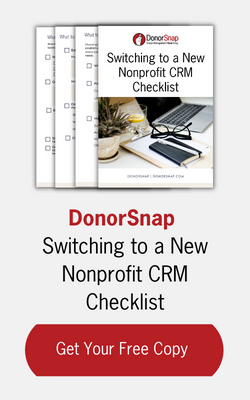Most organizations hold an annual fundraiser to supplement and augment their operating budget. The nonprofit Malaika Early Learning Center that was started by my wife and I (and the genesis for DonorSnap) is no different. Malaika started in 2003 and we held our first fundraiser in 2009. We thought it might be of interest to share some numbers and chronology of our fundraising experience.
A Little about Malaika
The Malaika Early Learning Center is located on the near north side of Milwaukee, Wisconsin. Most people who have not lived in or visited Milwaukee do not realize that it is one of the most racially segregated cities in the United States, and has some of the harshest conditions for children. The area of Milwaukee we serve is typically in the top three nationwide for all the wrong reasons, including:
- Teen birth rate
- High school graduation (only 58 percent)
- Incarceration rates (50 percent of males age 30-40)
- Unemployment rate (57 percent for males)
The children in Milwaukee are confronted with these difficult realities from the time they are born. Our goal with Malaika Early Learning Center was (and is) to provide a safe and nurturing environment that has an academic focus of helping children from the ages of three months to eight years old. We aim to have them as emotionally, socially and academically balanced as possible to help them break free of the cycle of poverty that afflicts Milwaukee’s north side.
Fundraising initiatives with Malaika Early Learning Center
Malaika has a very clear, tangible goal that is quite worthy of support. As is the case with most nonprofit organizations, however, fundraising has always been challenging. With just 150 children who use our facility, we are too small to attract a significant amount of attention. We also deal with children of the youngest ages, which makes it difficult to demonstrate the program’s empirical results. After they leave us, it is hard to track where they go, as most of our children change households once or twice a year. (As you can see – we have all the built in excuses for why it is hard to raise money. Probably the reality is the organization suffers from founders who are not good at asking for money and hope that people recognize the need and mission without being prodded).
As mentioned earlier we opened in 2003 and did not have our first event until 2009. Up until that point we relied on foundations, founders and friend’s contributions. In 2009, we decided we needed to have an event that we felt would be more of a Friend Raiser than a Fund Raiser. The belief was that if exposed to our mission, people would recognize the need and ultimately become supporters. Our goal was to expose people to Malaika more than it was to specifically raise money.
The results were, at best, mixed. We did have a fairly well attended first event (150 people) but really didn’t do a good job of converting attendees to supporters. This pattern continued for the next several years. We would raise $30,000 at the event but expended a large amount of energy focusing on the event itself trying to attract people to attend. We were not converting people into supporters. Many were attending due to personal relationships with my wife, myself or our businesses.
Over the last several years, the focus has shifted slightly from being a Friend Raiser to a Fund Raiser. We have focused more on the economics of the event (Sponsorship, Ticket Sales, Auction Items, Costs). We still hoped the event would raise awareness of the organization and its mission but our focus became one of raising money to augment the budget.
An analysis of our fundraising successes (and failures)
Here is a quick recap of our last three years that you can use as a point of comparision:
| 2015 | 2016 | 2017 | |
| # paid attendees | 136 | 146 | 120 |
| Sponsorship | $13,695 | $23,000 | $24,500 |
| Ticket Sales | $7,400 | $13,775 | $10,400 |
| Paddle Raise | $17,650 | $18,325 | $32,850 |
| Silent Auction | $19,808 | $10,975 | $- |
| Raffle | $- | $- | $5,050 |
| Other | $1,950 | $2,000 | $2,000 |
| $60,503 | $68,075 | $74,800 | |
| Expenses | $11,780 | $10,000 | $8,000 |
| Net | $48,723 | $58,075 | $66,800 |
As you can see, we have steadily increased the amount of net money raised over the last three years. The ultimate goal for the event is to raise $100,000. That is the minimum amount of external funding that the organization needs for its basic budget. Annually we raise $200,000 from all sources and hope to continue to do so. However, the more we can raise thru the event, the less time and energy is required by our Executive Director to chase Foundation money.
Here is a little of what we have learned over the past couple of years:
- Broadening attendee and donor base is critical: In the early years of the event, many of the Malaika’s donors were giving money out of friendship or business connection to my wife and I. That wasn’t good for the long-term health of the organization. As you can see by the attendance numbers, my wife and I pushed hard in 2015 & 2016 to get people to attend. In 2017 we backed off and simply sent emails vs. personal calls. The attendance dropped but hopefully the Board will pick-up the slack in the future and grow attendance amongst a broader base.
- Paddle raise: 2015 was the first year we did the paddle raise, and it was a surprising success. This was an idea presented by our new Executive Director and was slightly uncomfortable for me. Again, I don’t like to openly ask for money. In hindsight, if our goal is to raise money we should have been doing this since the beginning. In 2017 we added a different twist. Even though attendance was lower, I emceed the paddle raise which helped form a more personal connection between the Donor’s, the Founder’s and the Organization. In both 2016 and 2017 my wife and I offered to match all the paddle raises. What helped in 2017 was people saw a direct connection with raising their paddle and Kellie and I donating more money. It became fun for them to see how much they could make us donate. In the end, Malaika was the winner. (The paddle raise numbers exclude our match).
- Venue: In the early years we tried to focus on having an impressive venue that might attract more attendance. In 2017 we took a risk and move the event to our local baseball stadium club room (Miller Park). We made it a casual, sports-themed evening. The feedback was great, as people loved the relaxed atmosphere and socialization opportunities. Logistically, the venue was easy to deal with, there was plenty of parking and we were able to complete setup more quickly. Additionally, there really was no drop off in attendance due to the less prestigious venue.
- Raffle: In 2017 we experimented with a raffle method to give away in kind donations as opposed to a silent auction. The setup time and work was probably about a third as much this year as it had been in the past. In 2017 we had 20 items in the raffle versus 70 in the silent auction in 2016. On the plus side:
- People had more time to socialize, as they weren’t watching their silent auction items.
- Setup was a breeze compared to prior years
- We didn’t feel guilty selling a donated silent raffle item for half of its value.
- Checkout was a breeze
On the minus side:
- Some people were not happy that they couldn’t get the item that they set their sights on. Chance determined the ultimate winner (you could increase your odds by stuffing more raffle tickets in that items box).
- As you can see when combining the raffle and silent auction for the two years that we took in less $5,000 less in 2017 than 2016. People bought a certain amount of raffle tickets and then went back to socializing. The raffle translated into more money raised per item but less money overall. Even if we had the same number of items as 2016, I doubt our raffle sales would have been much more.
Where do we go from here:
As we assess this year’s event, we have several takeaways to consider moving forward:
- We will probably reintroduce 20 to 30 silent auction items, but keep the raffle as well, slightly decreasing the number of raffle items. Combined we think we will make more money
- DonorSnap will experiment with an auction app for Malaika’s silent auction to allow folks the time to socialize and not have to hover over bid sheets. Current software offerings are too expensive to warrant being used for a silent auction that will only raise $10,000
- We plan to go back to the same venue next year. The relaxed atmosphere greatly simplified the setup and cost of the event.
- There will be a continued push to get Board members more engaged in the process of inviting people to the event. The sponsorship and ticket sales carry the event. The more people we can get into the room, the better.
- One not so minor item is to move the bar location to be by the items being raffled or silent auctioned. People gravitate to the bar so that needs to be located where you want your people to be.
The event will be a constantly evolving work in progress. However, now that we are firmly focused on raising money to support the school (sounds obvious now) we have a goal and a direction to help guide the Board’s efforts.
If you should have any questions about the economics of the event, feel free to email me at DMueller at DonorSnap dot com and I’ll share what I can. As you can tell we are in no way professional fundraisers but are probably like many of you just trying to grind out what is needed to support your organization.



